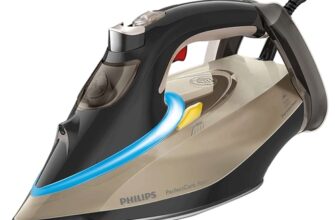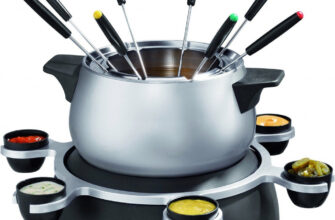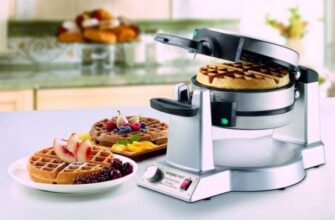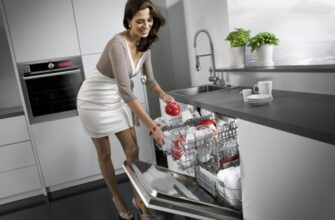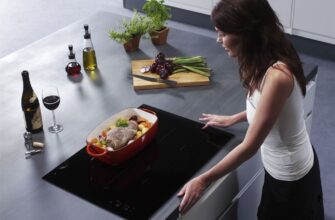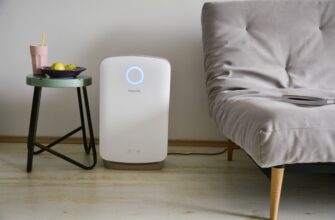When choosing a mixer, you need to pay attention not only to its power and equipment, but also to other parameters.
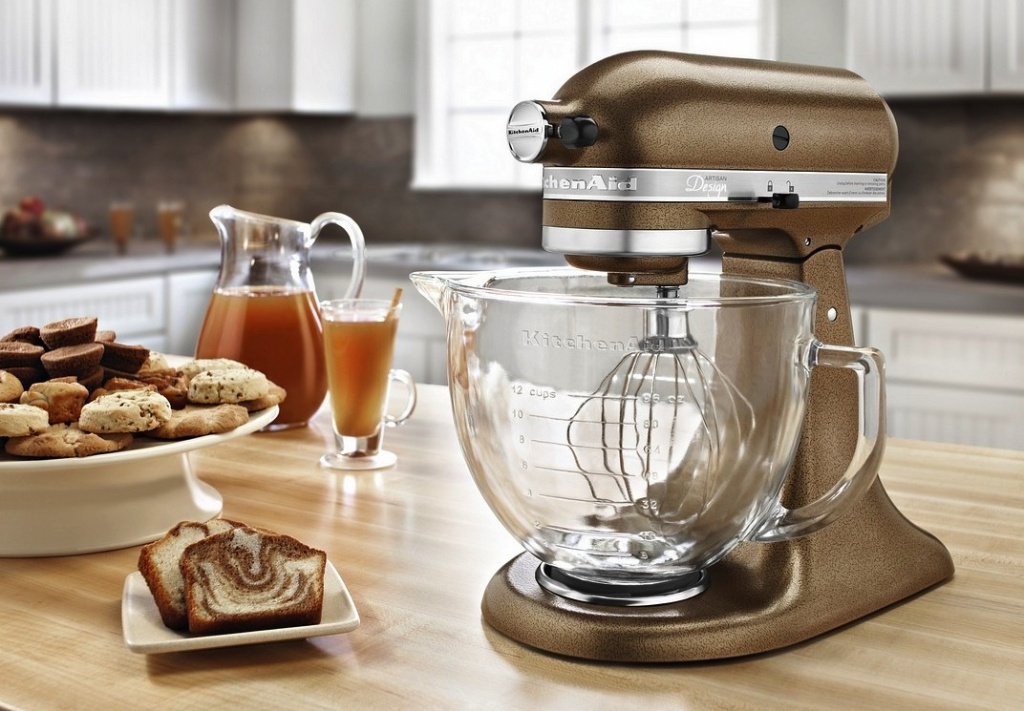
!
We recommend reading this article from an expert on choosing a kitchen blender.
- How to choose a mixer: basic criteria
- Mixer types
- Submersible (hand) mixers
- Advantages
- disadvantages
- Stationary mixers
- Advantages
- disadvantages
- Mixer selection parameters
- Power
- Bowl material and volume
- Plastic bowl
- Advantages
- disadvantages
- Glass bowls
- Advantages
- disadvantages
- Metal bowls
- Advantages
- disadvantages
- Body material
- Mixer plastic housing
- Advantages
- disadvantages
- Mixer metal body
- Advantages
- disadvantages
- Operating modes
- Nozzles
- Hand Mixer Weight
- Summary: how to choose a mixer
- How much does a good mixer cost
- The best mixer manufacturers
- Mixer selection video
How to choose a mixer: basic criteria
When choosing a mixer, it is recommended to adhere to the following criteria:
-
Mixer type (submersible or stationary);
-
Power;
-
Bowl material and volume (for submersible mixer);
-
Body material;
-
Operating modes;
-
Equipment;
-
Weight (for submersible mixer).
-
The manufacturer of the device is also important.
Mixer types
Structurally, mixers are divided into two types – submersible (manual) and stationary.
Submersible (hand) mixers

Submersible mixers are the most common and classic version of such kitchen appliances. The design or delivery of such devices does not include a bowl. The mixer itself is an electrically driven unit, in the lower part of which rotating beaters are installed.
When working, these whisks are immersed in a product that has been poured or folded in advance into any kitchen container – a bowl, a saucepan, etc.
An important parameter that determines the performance of submersible mixers is the length of the beaters. The higher it is, the more products the device can mix.
Advantages
-
Most common configuration (many models shown);
-
Can handle as many products as you like.
disadvantages
-
The quality of the stirring depends on the user – whether he will drive the whisks over the entire bowl or leave them in one place;
-
When using such a mixer, hands will be occupied – one or both;
-
With prolonged use, the hand may get tired;
Stationary mixers
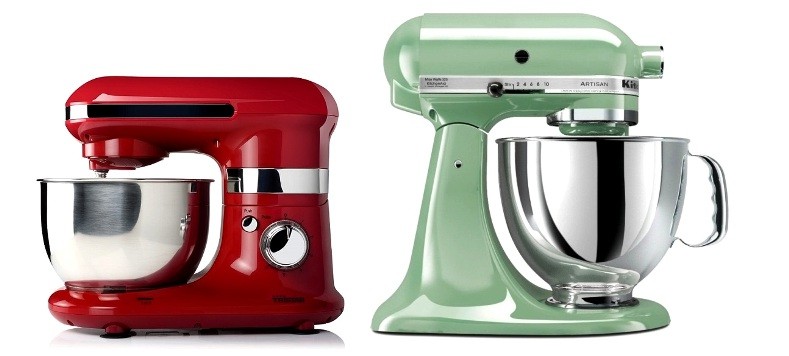
Stationary mixers differ from submersible mixers only by the absence of a handle and the presence of a stand. Corollas of such devices are located in a special reclining 'head'. The products are supposed to be put into the bowl included in the delivery set – however, if the dimensions are compatible, you can use any other dishes from the household.
Many operational parameters of such a mixer are determined by the bowl included in the kit. Its volume shows how many products the device can handle, and the material shows how practical the device will be.
Advantages
-
Hands do not get tired even with very long treatment;
-
Modern, ergonomic and hands-free design;
-
High quality mixing of products;
disadvantages
-
High cost and limited number of models;
-
They are slightly larger than submersible mixers;
-
Slightly more difficult to maintain than submersible mixers;
Mixer selection parameters
When choosing a mixer, it is worth considering the following parameters:
-
Power;
-
Bowl material and volume (for stationary mixers);
-
Body material;
-
Operating modes;
-
Nozzles;
-
Weight (for hand mixer).
Power
Power determines not only the maximum rotation speed of the beaters, but also the 'compatibility' of the mixer with different types of products. So, if you plan to knead thick dough or similar viscous substances, you should choose a model with a powerful drive. For other purposes, it is not particularly needed.
High power mixers, in fact, do not need. For mixing the vast majority of types of products, including minced meat, batter and fruit puree, a device designed for 200-500 W of current consumption or 80-350 W of efficiently consumed is sufficient.
In rare cases, if it is necessary, for example, to whip creamy foam, chop ice or knead thick dough, a more powerful mixer is needed – from 500 W.
Bowl material and volume
The material and volume of the bowl determine the practical qualities of stand mixers. It can be made of plastic, glass or metal.
Plastic bowl
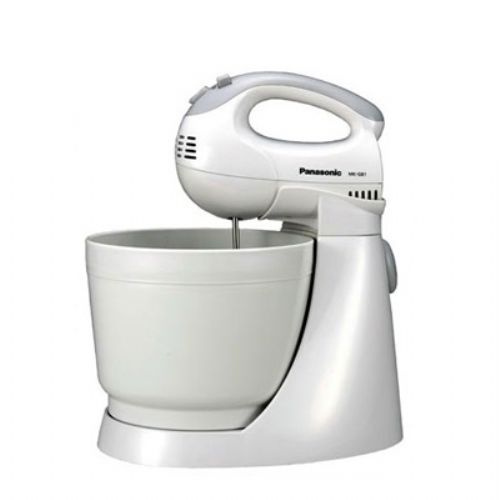
Plastic is the cheapest option. Mixers equipped with such a bowl can cost up to several thousand rubles.
Advantages
-
Low price;
-
Low weight;
-
Easy to clean;
disadvantages
-
Low resistance to mechanical stress (easily breaks or scratches);
-
Low resistance to temperature influences.
Glass bowls
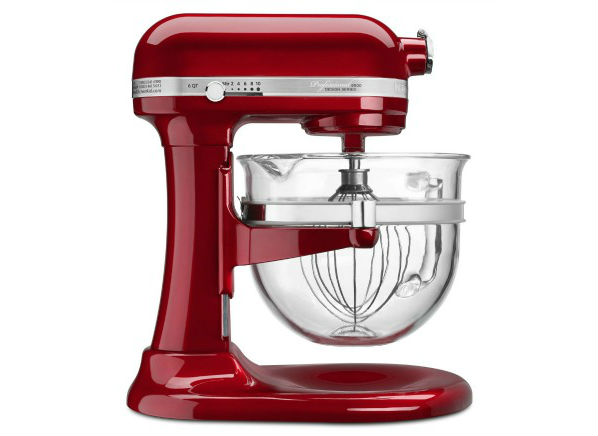
Glass bowls are rarely found in stationary mixers due to their mechanical fragility. However, they have an attractive design and are easy to clean.
Advantages
-
Transparency (you can control the mixing process);
-
Easy to clean;
-
Attractive appearance, long-lasting with proper care;
disadvantages
-
Mechanical fragility;
-
High level of noise and vibration during operation.
Metal bowls
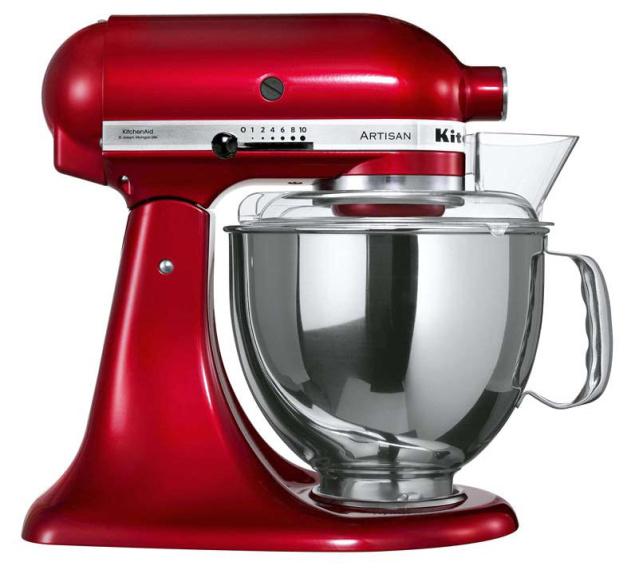
Metal bowls are most often found in mixers of the upper price segment (from 20 thousand rubles). They are extremely durable.
Advantages
-
Highest mechanical strength (not broken, not cracked, not scratched);
-
Attractive design.
disadvantages
-
High cost;
-
The vibration and noise level during operation is higher than that of plastic (but lower than that of glass).
If your budget allows, you should take a mixer with a metal bowl. If it is limited, then with a plastic one. Glass, despite its decorative and operational appeal, is still too fragile.
The volume of the bowl is also important. The larger it is, the more products will fit into it, respectively. But it is also not recommended to choose too capacious bowls for two reasons. First, it will be trivial to install it (when filled, it can weigh from 3 kg). Second, the mixing quality will suffer.
Thus, 1-3 liter bowls are ideal for home use.
For the best possible mixing, which is especially important for some products like dough or sauces made from ingredients of different consistencies, you should choose a mixer with a rotating bowl. Such a device will ensure the greatest uniformity of the structure of the finished dish.
The disadvantage of the rotating bowl is the lack of cross-compatibility. That is, it will not be possible to install another container in such a mixer. Regular kitchen bowls or third party models will fall off the moving surface.
Body material
The material of the body does not have a particular effect on the functionality of the device, but the design and operating period of the mixer depend on it. This technique can be plastic or metal.
Mixer plastic housing
Plastic is the most widely used material in hand mixer construction. It is lightweight, which is especially important for this type of device.
Advantages
-
Easily washed off most contaminants;
-
They are lightweight and pleasant to the touch (do not overheat and do not overcool).
disadvantages
-
They have low mechanical strength, are prone to cracks and scratches;
-
Many grease stains cannot be removed from these housings.
Mixer metal body
Stationary mixers are usually made in metal cases.
Advantages
-
Attractive appearance and design;
-
Better heat dissipation from the drive;
-
Durability and resistance to mechanical damage;
disadvantages
-
Any contamination on them is very noticeable;
-
High price. Mixers, made in a steel case, are sold at a price of 20 thousand rubles.
-
Large dimensions and high weight of the device.
Operating modes
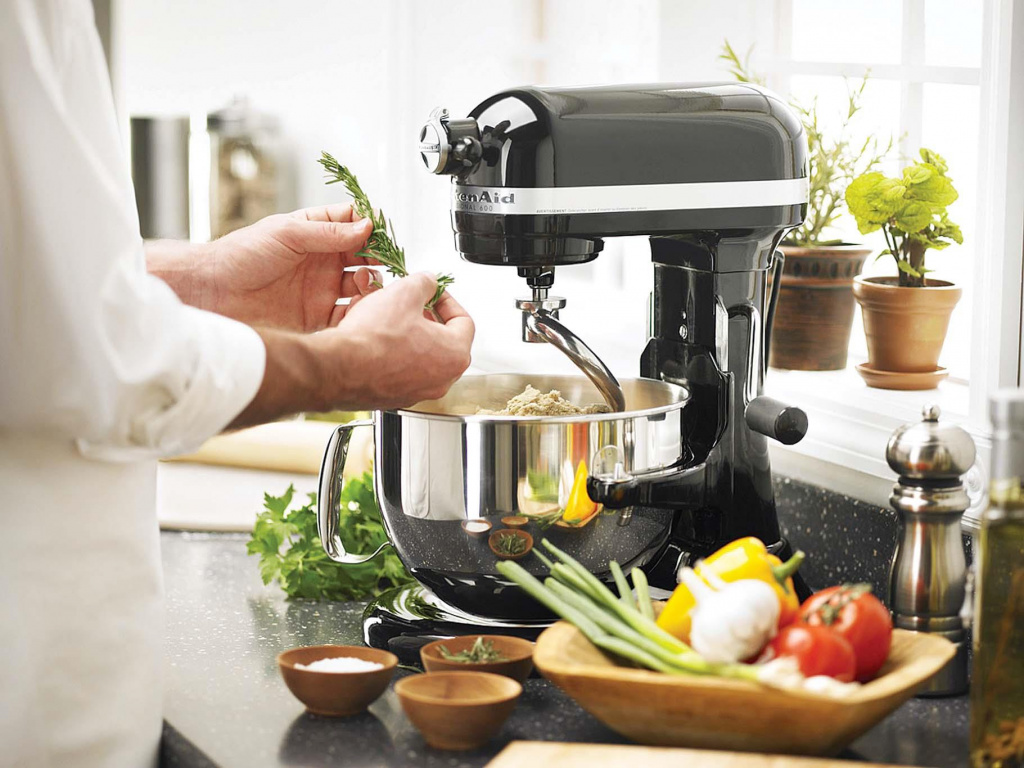
In addition to a variety of high-speed, mixers offer several additional operating modes that allow you to ideally mix certain types of products:
-
Turbo mode. In it, the device operates at maximum speed, effectively whipping, stirring or even splitting products;
-
Pulse mode. In it, the device operates at high speeds, periodically turning off. This allows you to avoid the risk of overheating of the device drive and its damage, while at the same time thoroughly mixing or crushing the products;
-
Slow start. Allows you to run the mixer at reduced speed to gently mix products or add something to the mixture;
-
Overheating protection switches off the mixer when its motor reaches an extremely high temperature.
All these functions (except for protection against overheating) have rather narrow areas of application, so buying a mixer equipped with them is worth buying only if you plan to use it for preparing the corresponding dishes.
Nozzles
The number of possible applications of the mixer depends on the number of attachments. Usually the set includes whisks and hooks. However, the mixer attachments are as follows:
-
Whisk whisk are intended for mixing and whipping various liquid and puree products;
-
Dough hooks allow you to replace batter, medium or even thick dough;
-
The blender attachment is designed for mashing soft foods (fruits, boiled vegetables, some types of meat);
-
The universal chopper is similar in functionality to a hand blender and can 'handle' even hard food.
The more attachments in the mixer set, the better.
Hand Mixer Weight
The weight of a hand mixer is directly related to its power. Models equipped with a 300-500 W drive have a weight of about 0.5-1 kg. But powerful mixers (from 1 kW) already weigh more than 1-1.5 kg.
The optimal weight of a hand mixer is up to 1 kg inclusive, and the less it is, the better. Because it is inconvenient to hold a heavy device in your hands.
Summary: how to choose a mixer
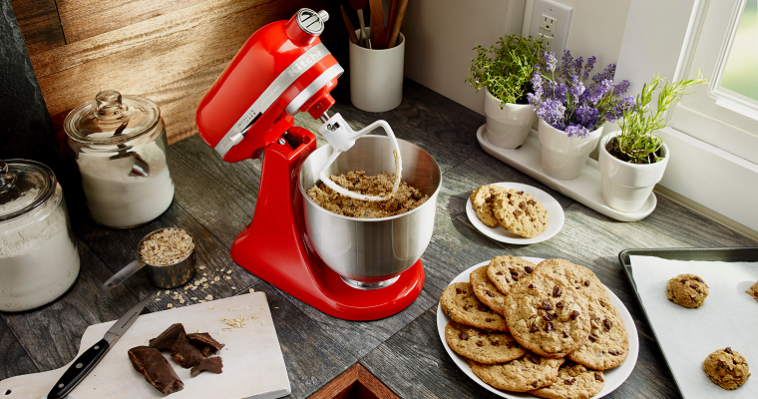
When choosing a mixer, you can follow this algorithm:
-
Estimate the budget. If it is less than 10 thousand rubles, it is better to buy a high-quality hand mixer. If it is larger, then you can pay attention to stationary models;
-
Assess the location in the kitchen and the desired use cases. If you want to free your hands, and there is a lot of free space on the work surfaces, you should purchase a stationary mixer. If there is no place, and freedom of hands does not really matter (often you do not plan to use the device), a submersible model will do;
-
Assess the intended use cases. You will need to chop ice, mix thick dough or minced meat, prepare salads using a mixer, whip cream – you need a more powerful model. It is planned to simply mix various liquids – then a device for 80-500 W is enough;
-
The more attachments included, the better.
!
When choosing a stationary mixer, you should also pay attention to the bowl material. Better metal or plastic than glass.
How much does a good mixer cost
Mixers cost from several hundred to several tens of thousands of rubles. But the vast majority of models are in the price range of 1-4 thousand rubles for manual ones, 2-5 thousand for stationary ones with a static bowl and 25-55 thousand rubles for stationary ones with a rotating bowl.
Durable, high quality and functional mixers cost:
-
2-3 thousand rubles for manual (submersible);
-
3-5 thousand rubles for stationary with a static bowl (not luxury brands like KitchenAid or Smeg);
-
45-50 thousand rubles for stationary ones with a movable bowl (including luxury brands).
The best mixer manufacturers
Among the manufacturers of mixers are:
-
Panasonic, Polaris, Philips – high-quality models of the budget price segment;
-
Bosch – quality models in the middle price segment.
-
Products from the luxury brands KitchenAid and Smeg also have excellent durability (the operating period for most models is more than a decade), but their price often exceeds 40-50 thousand rubles.
Mixer selection video
Attention! This material is the subjective opinion of the authors of the project and is not a purchase guide.


